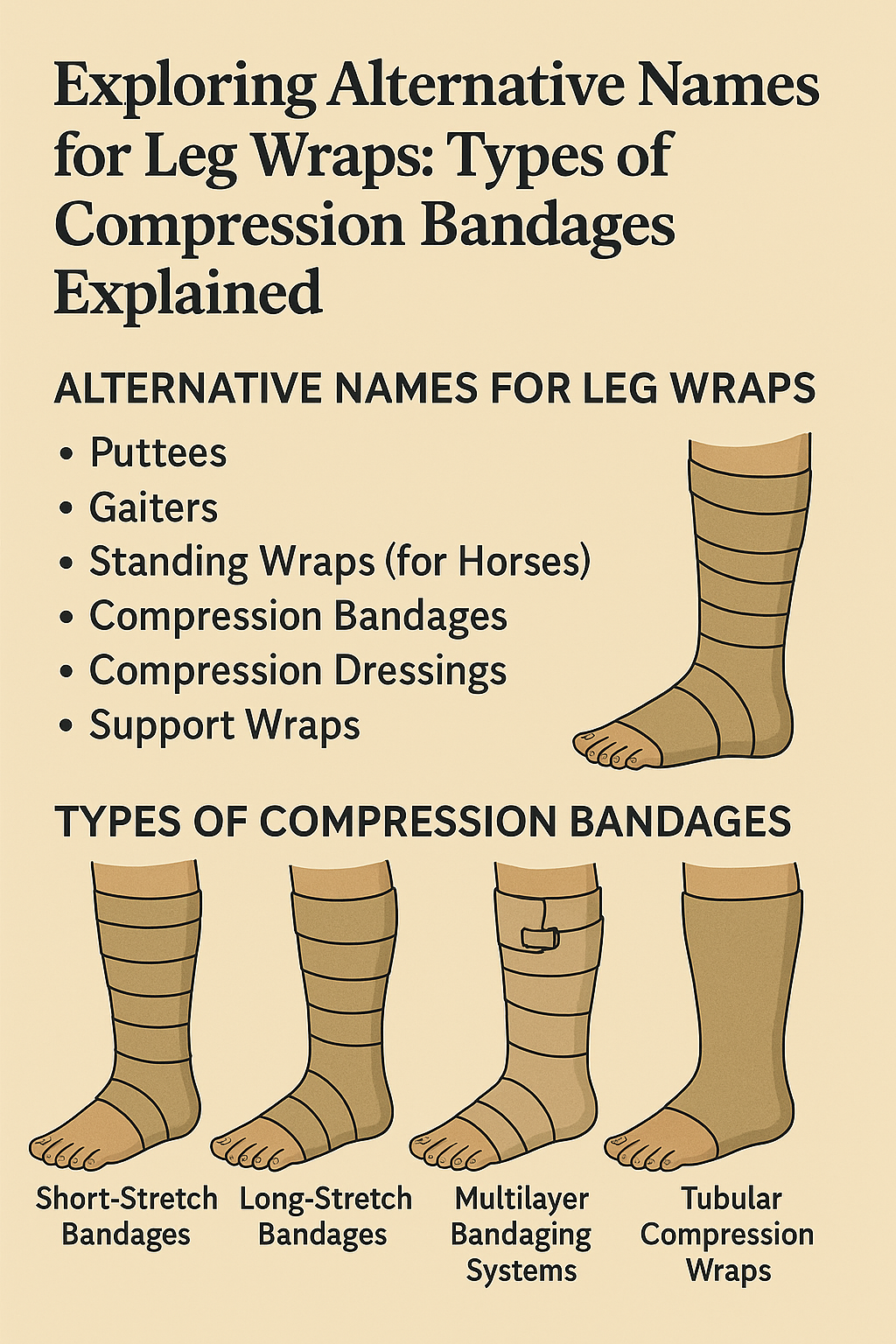
Exploring Alternative Names for Leg Wraps: Types of Compression Bandages Explained
Published on Apr 27, 2025
Exploring Alternative Names for Leg Wraps: Types of Compression Bandages Explained
Compression wraps and leg wraps have served many purposes throughout history — from protecting soldiers on the WWI British helping athletes and horses recover from injury. While the basic idea remains the same — wrapping material around the leg for protection, support, or compression — the names and styles have evolved.
At Paddelaters, we believe understanding the different names and types of compression wraps helps customers make more informed decisions. Whether you're looking for historical accuracy or functional support, this guide will help you navigate the options.
Alternative Names for Leg Wraps
Leg wraps go by many different names depending on their historical, medical, or practical use. Some common alternative names include:
- Paddelaters – Traditional military terminology
- Puttees – Popular among soldiers in World War I and II
- Gaiters – Often used for outdoor hiking and military wear
- Standing Wraps (for Horses) – Used in equestrian care
- Compression Bandages – Medical term for healing support
- Compression Dressings – Wound care combined with pressure
- Support Wraps – Used in sports or physical therapy
Each of these names refers to a wrap or bandage that serves a critical role — whether it’s protecting a wound, aiding muscle recovery, preventing swelling, or enhancing uniform authenticity.
The Importance of Leg Wraps in History
Historically, wraps like puttees were a crucial part of military uniforms. Soldiers wound long strips of cloth around their lower legs to protect against mud, cold, and injury during long marches. Today, enthusiasts who participate in reenactments or collect historical uniforms still use authentic leg wraps to maintain historical accuracy.
At Paddelaters, our focus is on recreating these essential items with care and attention to historical detail — while also offering functional compression wraps for modern needs.
Types of Compression Bandages for Legs
Choosing the right compression wrap depends heavily on your intended use. Here’s a breakdown of the primary types:
1. Short-Stretch Bandages
- Best For: Chronic venous disorders, lymphedema
- Features: Low resting pressure but high working pressure
- Pros: Supports active muscle pumping while standing or walking
2. Long-Stretch Bandages
- Best For: Acute injury recovery, post-surgical use
- Features: High resting pressure
- Pros: Provides continuous compression, needs careful application to prevent cutting off circulation
3. Multilayer Bandaging Systems
- Best For: Advanced venous ulcers, heavy swelling
- Features: Combination of foam, inelastic bandages, and cohesive wraps
- Pros: Effective at maintaining high compression levels for days
4. Tubular Compression Wraps
- Best For: Light compression needs, support during daily activities
- Features: Easy-to-wear tube-shaped material
- Pros: No wrapping skills required, convenient for frequent use
5. Compression Dressings
- Best For: Healing wounds while providing compression
- Features: Absorbent padding combined with compression
- Pros: Promotes wound healing alongside swelling control
Each type offers specific benefits depending on whether you are managing swelling, supporting healing, or simply completing a historically accurate uniform.
Compression Wraps for Horses: Standing Wraps
Standing wraps for horses is another major use of compression wraps. These wraps help horses:
- Recover from injuries
- Maintain tendon health during stall rest
- Prevent swelling during transportation
- Stay warm during colder months
It’s important to learn the correct method to apply standing wraps to avoid injury or circulation problems. High-quality standing wraps are essential for professional equestrians and horse owners alike.
Compression Dressings vs. Compression Wraps: What’s the Difference?
Though the terms are often used interchangeably, there’s a key distinction:
- Compression Dressings are designed for wound care, offering both healing properties and compression.
- Compression Wraps are focused solely on providing support and improving circulation without necessarily treating an open wound.
Understanding this difference can help you choose the right product depending on your specific need — whether for historical accuracy, injury recovery, or equestrian use.
Tips for Choosing the Right Compression Wrap
When selecting a compression wrap for legs, consider these important factors:
- Purpose: Are you buying it for uniform authenticity, medical recovery, or equestrian needs?
- Material: Cotton blends for breathability, elastic materials for tighter compression
- Mobility Needs: High-stretch wraps for resting periods, low-stretch for active use
- Ease of Application: Tubular wraps for simplicity; traditional wraps for customization
At Paddelaters, our wraps are designed with both function and historical tradition in mind — providing you with the very best whether you're on the battlefield, at the barn, or a reenactment event.
Conclusion
From the battlefields of history to modern stables and hospitals, leg wraps have always played a vital role in support, protection, and healing. Understanding the alternative names like puttees, gaiters, standing wraps, and compression dressings helps you appreciate the versatility and necessity of these simple yet powerful tools.
When you choose the right type of compression bandage — whether short-stretch, long-stretch, multilayer, or tubular — you’re investing in comfort, recovery, and performance.
At Paddelaters, we honour the long-standing tradition of leg wraps with high-quality materials, historically accurate designs, and products that meet today's needs. Whether you're a history enthusiast, an athlete, a horse owner, or someone recovering from an injury, trust Paddelaters to provide you with wraps that offer the right fit, the right support, and the right style.
